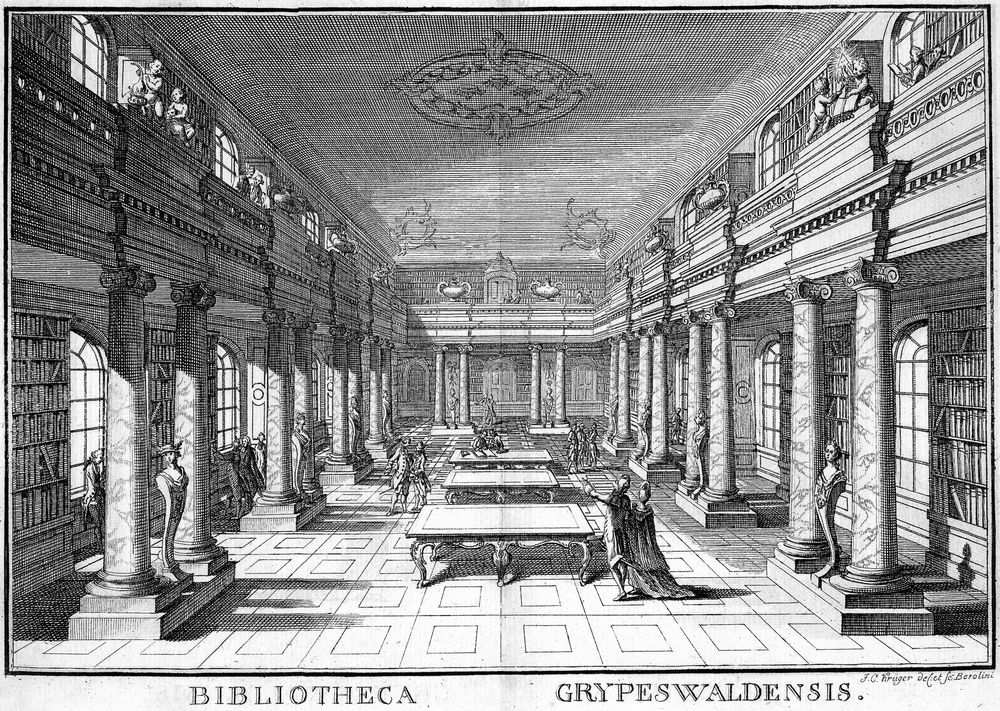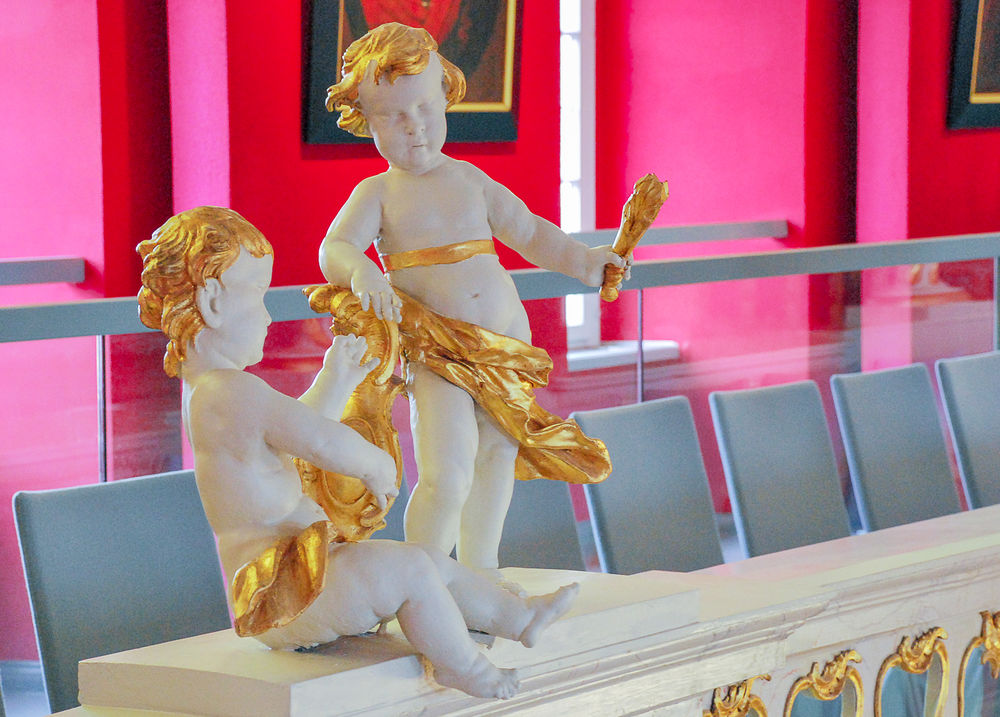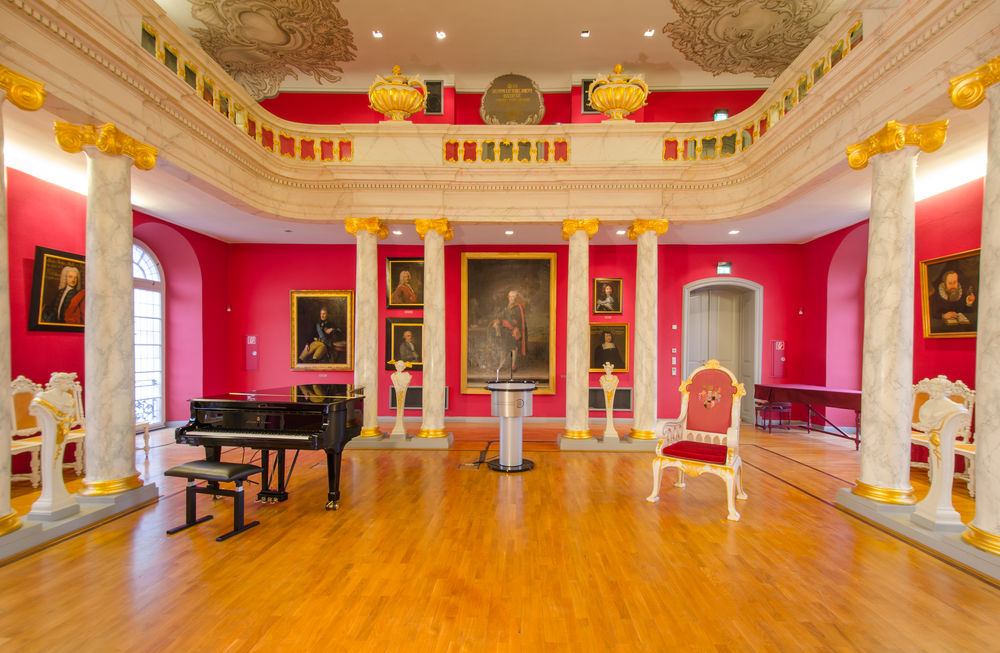The Aula (Auditorium) of the University of Greifswald
On the History of the Baroque Library Hall

The Aula is located in the University of Greifswald’s main building, which was completed in 1750. Financed by the university's own funds and conceived by mathematics professor Andreas Mayer - you can see his portrait at the front of the north wall - it was a teaching space for all four faculties under one roof: in addition to professors' flats, there was an anatomical theatre, lecture halls, rooms for scientific collections and a Karzer (student detention cell). The core of the building, which was erected on older foundation walls, was the two-storey library hall. Imagine today's Aula in the sunlight with expansive reading tables and overflowing bookshelves on the walls! The columns, the gallery and the wooden sculptural decoration - works by the Stralsund carver Jakob Freese - have now been restored to their original appearance.

No baroque reading room without a display of imagery: between the double Ionic columns with painted marbling, you notice the delicate herms of the nine Muses, i.e. the ancient patron goddesses of the arts, as well as the gods Hermes, Minerva and Apollo. The cherubs above you on the balustrade are supposed to embody the four faculties (medicine, law, philosophy and theology). The bulbous carved vases with their grotesque faces on the handles probably once served as oversized candlesticks.
In Prussian times, the increased number of students and even more so, the considerable growth in scientific literature burst the capacities of the small book hall. The university received a modern library building designed by Martin Gropius in 1882, and from then on the vacated room was used as an auditorium with seating and a lectern.
Look at the ceiling: already back in the 18th century, there was a chandelier and rococo stucco. However, the current version with sprawling grisaille painting dates from the 1950s. Another notable 20th century addition is the Rector's Chair from 1906, designed by the art nouveau artist Heinrich Vogeler as a modern interpretation of Baroque forms.

The wall decorations and current picture arrangements in the Aula are the result of a complete renovation, which was completed for the occasion of the 550th anniversary in 2006. Blackout blinds, sound insulation, air-conditioning, colour design and restoration of the wooden elements were realised in close cooperation with the building conservation office, the architects and the building contractors. Behind the modern lectern, you can see the so-called Swedish Gallery. The Queen of Sweden was the guest of honour at the ceremony in 2006. Portraits of protagonists from the Swedish Vorpommern period were therefore selected from the university's collection of paintings. In the middle, you can see the large painting with King Gustav III of Sweden. On the soundproof walls between the window axes are portraits of various scholars from the 17th and 18th centuries. The pictures on the opposite side, around the entrance area, describe a different era of the university’s history, focussing on the time when the university was founded and the reign of the dukes in Pomerania. Worthy of special mention is the copy of a donor's plaque from Greifswald’s cathedral showing the university founder and mayor, Heinrich Rubenow, surrounded by his fellow scholars from Rostock. On the other side of the door, the most striking feature is the massive epitaph slab for Duke Ernst Ludwig. As a special supporter of his state university, he planned the Renaissance predecessor of the university building in which you now find yourself.
With a capacity of up to 200 visitors, the Aula still provides the festive setting for smaller celebratory events such as doctoral graduation ceremonies or chamber music concerts. In addition, it is visited by thousands of tourists every year, not least because of its fame through the novel "Die Aula" by Hermann Kant (1965).
